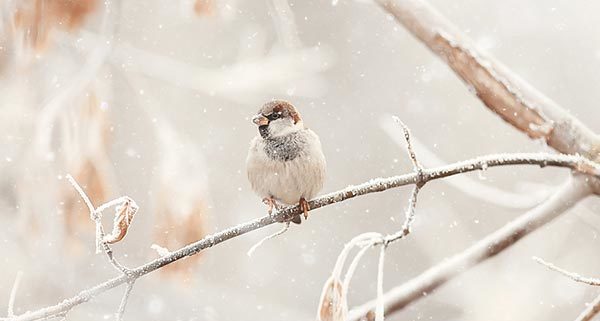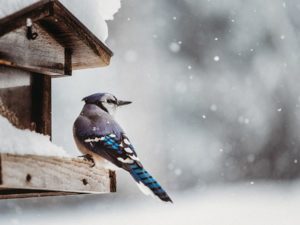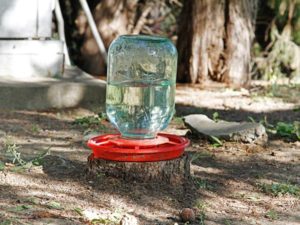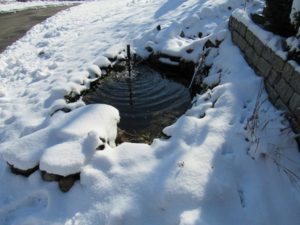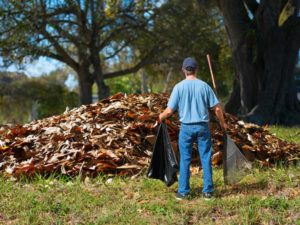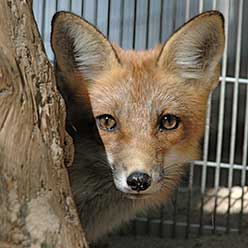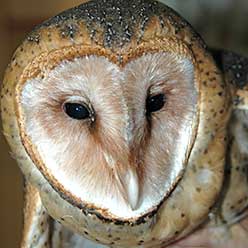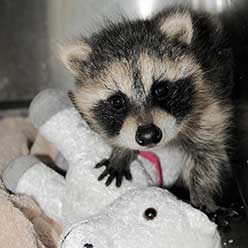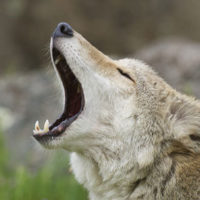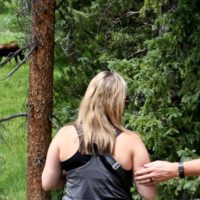What you can do in your own yard to help Cape Cod Wildlife get through the winter
Winter can be hard. It’s cold and frozen and sometimes all you want to do is snuggle down with a warm blanket and hot chocolate in front of a fireplace. But before you get too comfortable, take a moment to consider what you can do to help local wildlife before winter hits.
Think about it this way: if you’re providing for small animals and plants in a meaningful way, that action moves all the way up the food chain and promotes a healthy and thriving ecosystem in your backyard throughout the cold months.
With just a little preparation, you can winterize your backyard and make it a haven for your local wildlife. Simply remember the three basic things every animal needs to survive the winter: food, water, and shelter — then make sure your yard provides them.
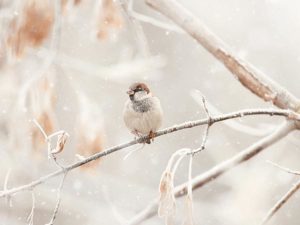
Food
Fill Your Bird Feeders. Bird feeders are one of the easiest ways to provide food to wildlife. Use a seed that provides a lot of substance and energy, such as black oil sunflower seeds.
Put Out Suet. Suet is fat found near the kidneys in beef and mutton. It provides a great high energy food for winter birds and is a particular favorite for woodpeckers, jays, and chickadees. Make suet cakes by adding fruits, nuts or insects, but don’t leave it out when the weather turns warm. Suet spoils quickly when temperatures are above freezing.
Use Nature’s Home-Made Feeders. There are a number of things nature provides that you can use to feed wildlife. Hang dried sunflower heads and let the birds and squirrels pick out the seeds. You can also use dried corn on the cob or make a straw wreath for animals to sneak pieces from to make their bedding. Half of a pumpkin shell encourages little critters to grab a quick bite to eat and provides lots of nutrients. Peanut butter smeared pine cones rolled in cornmeal is a favorite to get the kids involved. For the holidays, make strings of popcorn and cranberries and hang where animals and birds can reach them.
Plant Berries, Nuts, and Seeds. One of the easiest ways to help wildlife survive the winter is to plant trees and shrubs that produce seeds, seed pods, fruit, (berries) and nuts, but stick to something native to ensure your local wildlife eats it. A few standbys that farewell include dogwood, winterberry holly, and sumac. Leave the fruit on the plants and when winter comes, the animals will gratefully devour it.
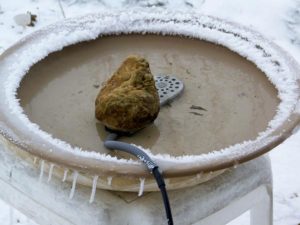
Water
Heat Your Birdbath. A heated birdbath can become one of the most popular items in your yard. Not only does it provide water for drinking, which more than just birds appreciate, but it gives the birds a place to splash and play. Bathing is essential to their survival in the winter and actually helps keeps them warmer. When birds bathe, their inner feathers fluff, creating more insulation to protect them against the elements. You can modify your existing birdbath into a year-round paradise by adding a simple heating element available at most garden stores. These elements keep the water temperature right above freezing and cost only a few cents a day to run.
Two Birdbaths? If you really want to make a difference to your local wildlife this winter, place a second heated birdbath on the ground with no base. This provides water to animals that don’t climb, such as rabbits and hares, and keeps the climbers, like raccoons and squirrels, off of the other one.
Build a Pond. (Extra points for this one) If you have space and the motivation, build a small pond; even an ornamental one in your flower garden can do wonders for winter wildlife. Fresh, consistent water is one of the most important things an animal needs in the winter and one of the hardest to find.
One Dish at a Time. If you don’t have a birdbath and aren’t planning a pond, you can still encourage wildlife by placing a dish of water outside. Even a dog dish full of fresh water can mean the difference between life or death for some animals. Refill it every day and before long, you’ll have regulars who stop by daily for a drink.

Shelter
Make a Brush Pile. Instead of bagging or burning your leaves, find a place in the corner of your yard and use them as the base for a brush pile. Add sticks and twigs and even throw on your Christmas tree after the season’s end. A brush pile provides a warm habitat for many different kinds of wildlife including spiders, salamanders, butterflies, toads, and mice. Don’t think these small critters don’t matter. They’re the food for many larger species and a necessary component to the food chain. By making a cozy home for insects, moles and other small animals, you’re doing your part to make sure the fox, owls, and eagles survive as well.
Cover Your Flower Garden with Leaves. Like your brush pile, covering your flower garden with leaves provides shelter to small animals and insects throughout the winter. And while you’re at it, hold off trimming back your flowers and pruning your hedges until spring. The dead flowers, stalks and overgrown branches offer places to sleep and hide. Remember, the more coverage an area provides, the more wildlife it can protect.
By winterizing your yard, you help the little guys who, in turn, help the big guys thrive. When mating and nesting season comes along, there are healthy populations everywhere, thanks to your yard.

